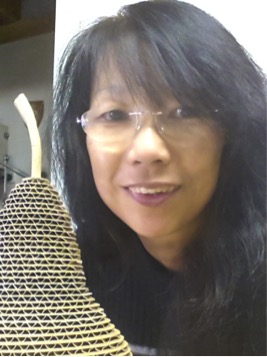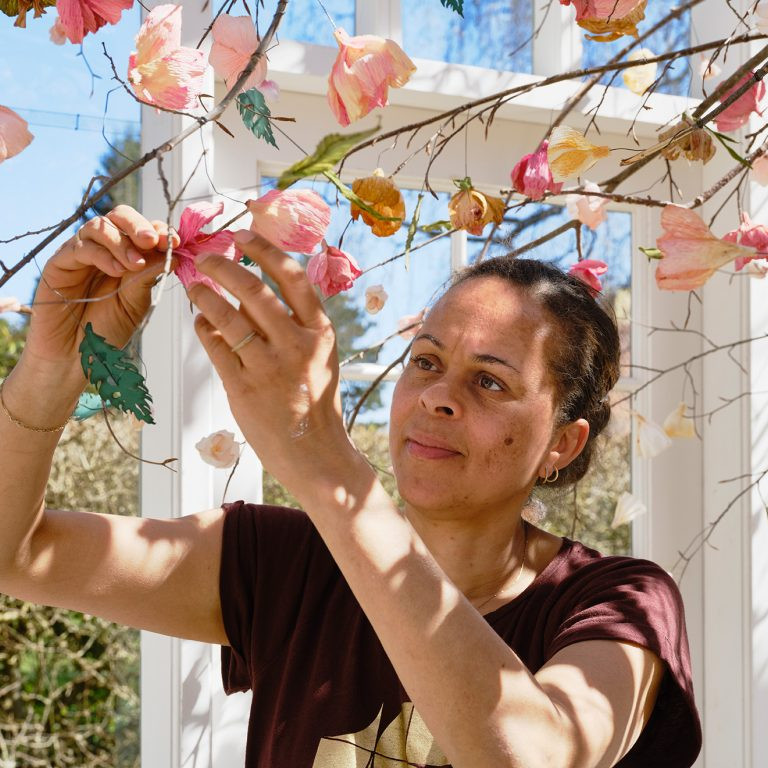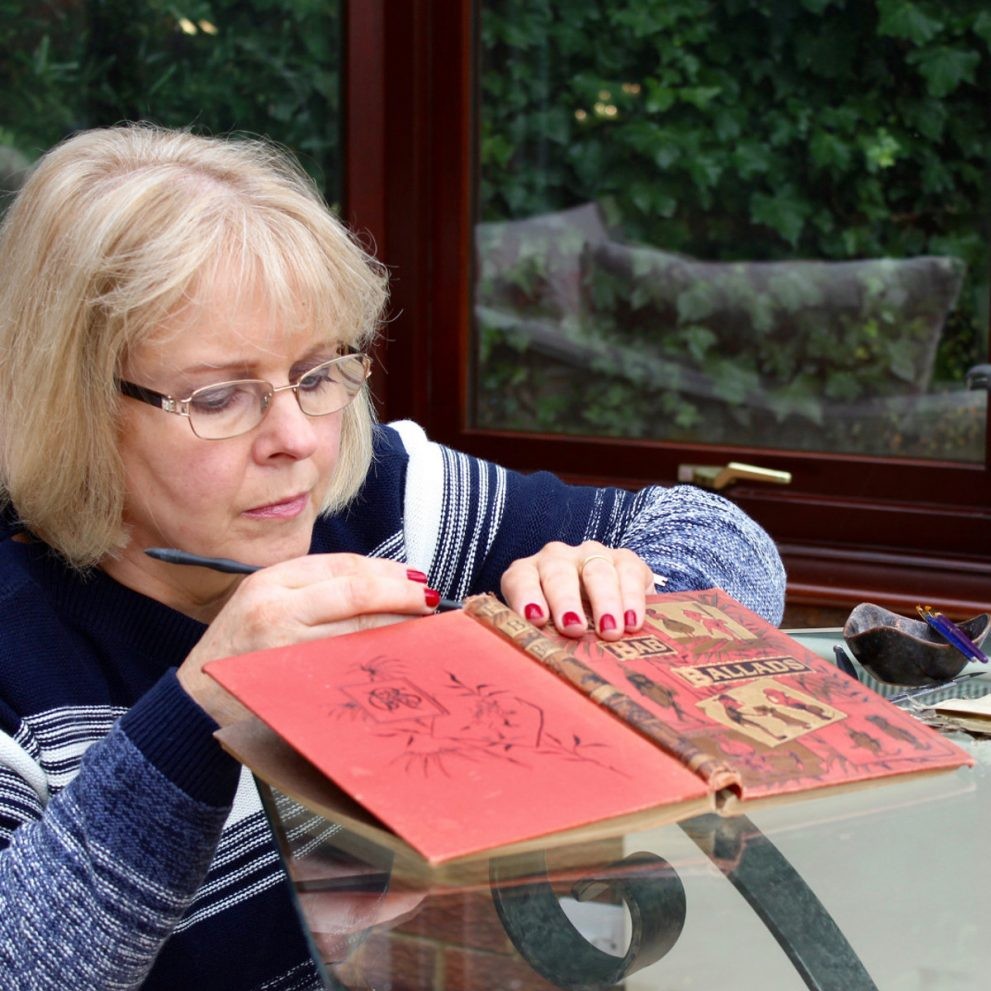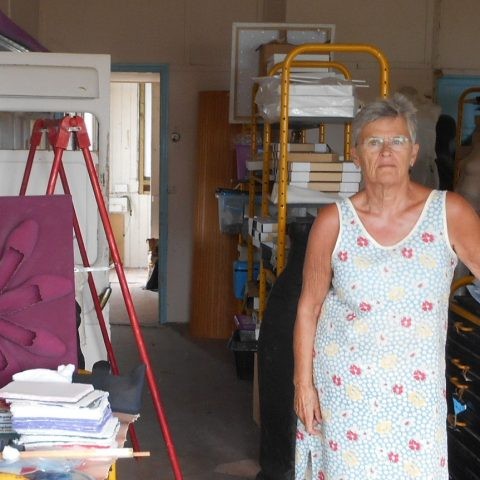Tracy Luff Visual Artist - Goulburn NSW, Australia
What lead you to use cardboard?
It all started when I was studying art. We were given a task to create sculpture or artwork from recycled materials. I think I actually forgot to bring some materials so I simply took some old cardboard boxes from the industrial bin. That is where it started but there is more too it. Working with the fluted cardboard I soon discovered that beneath its surface was a dynamic and interesting medium. The variety of textures I discovered and the variations possible, simply by cutting it a various angles was amazing to me. I also loved the earthy and humble colours the cardboard came in. The more I worked with it, the more excited I became.
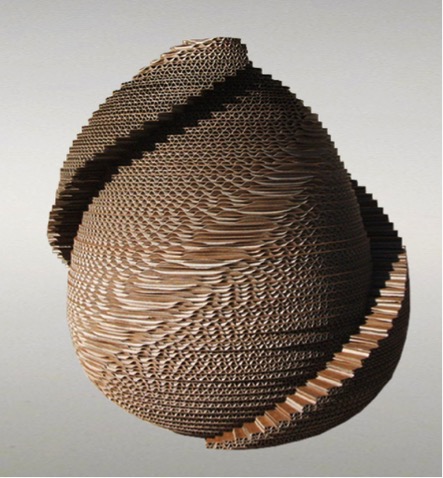
‘Pivotal’
How do you store your collection of cardboard?
I have never thought of my stock pile of cardboard as a collection. Since I needed so much of it, I was always on the look out for the right kind of cardboard. They all vary so much in quality, from soft weak cardboard that is not durable enough for my work to really hard or even brittle cardboard which is also unsuitable. I quickly discovered the brand names associated with the best cardboard – that is the brands of whitegoods or car part manufacturers etc that use the cardboard for their packaging. So I soon had a store of the best cardboard that I simply store flat in a waterproof shed.
How important is the print on the outside of cardboard boxes to your work?
‘Hill”
Generally speaking, the print on the cardboard is not important in my work as it is the exposed cut edges that are predominant in creating textures and visual effects. Occasionally the printed colours do show through in my work, usually in an accidental kind of way rather than by design
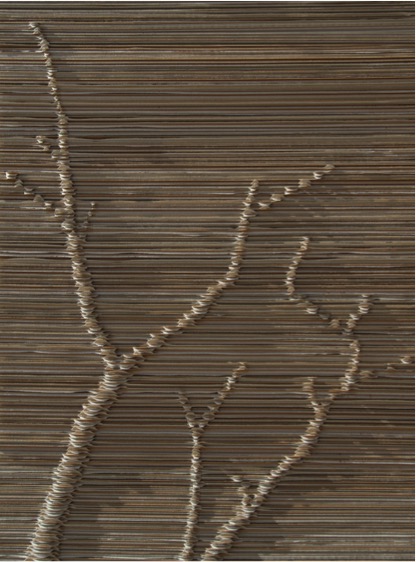
‘Bare Land’
Discuss your feelings about the importance of using recycled materials in your art?
I don’t set out to voice an environmental message; although due to the nature of the medium that message or interpretation is always there. It is challenging to create work that surpasses that basic environmental message – I mean that I want my work to say more than speak simply of the medium it is constructed of. Having made that point, I still have strong feelings about re-using and recycling resources. I grew up in a culture that held those values more or less out of necessity. We never threw things away that could be re-used or recycled in some way
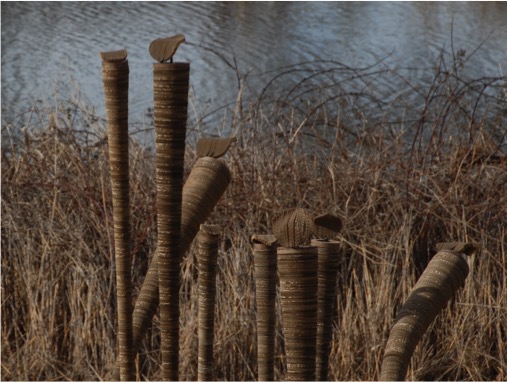
‘TDO’
Explain how your artistic career has developed since your arrival in Australia in 1997?
I actually arrived in Australia in 1985 but didn’t formally study art until 1997. As a child I was always very creative, in fact I often recycle materials to create craft works. In 1997, I commenced formal studies in fine arts at the Newcastle TAFE. I studied everything from drawing, painting, print making, sculpture and photography at the Diploma level. When I enrolled for the Advanced Diploma course, I focussed on painting and sculpture. It was my work in fluted cardboard that attracted the most notoriety so as much as I loved to paint and sculpt in a variety of mediums, my work became dictated by this humble yet powerful medium. In my early years my focus was on gaining as much exposure as possible and I did this by entering as many competitions an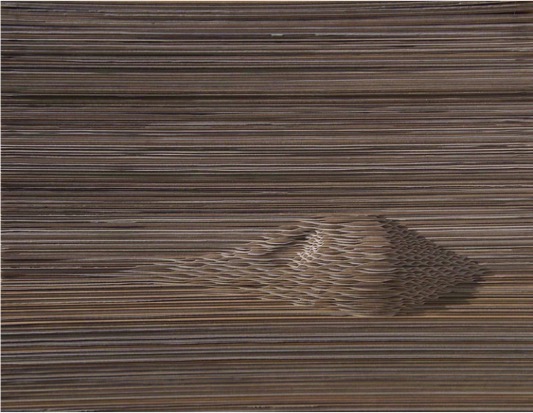 d group exhibitions as I could. …..
d group exhibitions as I could. …..
Discuss the process your work takes from inspiration to the finished piece.
Inspiration for my work can come from literally anywhere. Often I am creating work as a response to a theme presented to me by a curator, other times I am designing for a particular space where the work will be exhibited. Also the medium itself talks to me, i.e. I respond to the way the medium feels or looks as I manipulate or shape it. Often I get ideas for new works when I am working on current work. I always make notes for future reference. All my ideas pass through a visual diary where I sketch to develop ideas and inspiration can also be a product of this process. I have often woken at night and found myself madly sketching ideas that came to me during sleep.
Once I have developed my concept for a work I nut out the finer details like proportion and scale using mainly drawing, but often by manipulating images on my laptop. I nearly always produce a Marquette, especially for large scale work. A lot of my projects cannot be assembled in my studio so the Marquette is essential to get an overall 3D image of what the work will look like.
Planning the production of the work sometimes requires the use of a spread sheet program to calculate sizes and quantities of individual cut pieces. Depending on the work, steel frameworks, internal support structures, suspension methods, attachment or joining techniques need to be designed and made. There is rarely a project that doesn’t require some level of technical problem solving to accomplish.
Production of the artwork components is quite laborious and time consuming. I get lost in the repetitive processes of marking out, cutting and sorting the individual pieces before assembly. It really feels like factory work to me and transports me back to my younger years when I worked in factories during my school holidays to make extra pocket money.
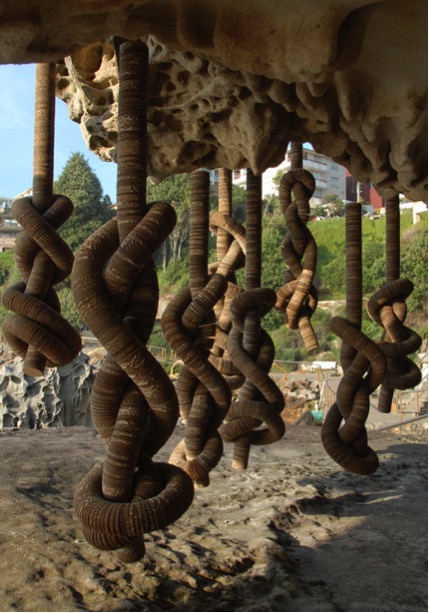
‘Rising Tensions’
Assembly of large works requires a well-organised space and sometimes that means outside in my back yard. Most of the time I will also pack my work, transport and install it myself – with the aid of my Husband.
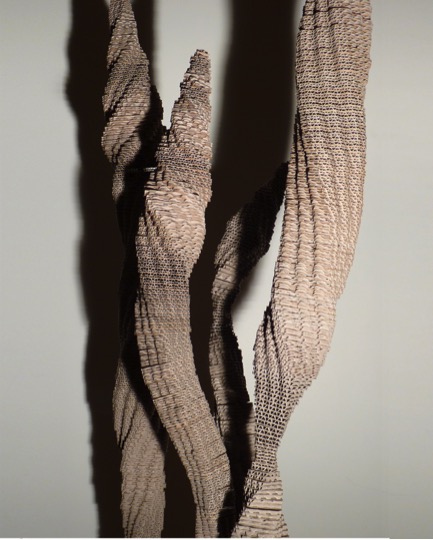
‘Shoots’
How about durability, is this a question you are often asked?
Most of my work is designed to be in doors and the main question of durability related mainly to the archiveability of the work. Fluted packing cardboard is not archival and not designed to last forever. As I had not been using it for very long, I couldn’t be certain about its longevity either. I investigated it through industrial chemists and by looking at examples of cardboard used in art going back a long way. I concluded that it would last quite well under relatively stable conditions – the kind of conditions most artworks would be kept in. I was curious about how it would cope outside in the weather so I created an installation called “The Different Ones” and installed it by a lake where it endured wind, rain and the hot sun over a period of six weeks. It did survive admirably and to this day that work is still in my garden after five years weathering gracefully.
Discuss the importance of having a good gallery space for your work?
It is important to me that my work is exhibited at its best and this means the space needs to be good. In most cases, I will install the work personally so that I am happy with the way it is presented. I work hard to create the work so I want people to see it at its best. Often I will check out the gallery space before I create the work so that in essence I make the work for a particular space.
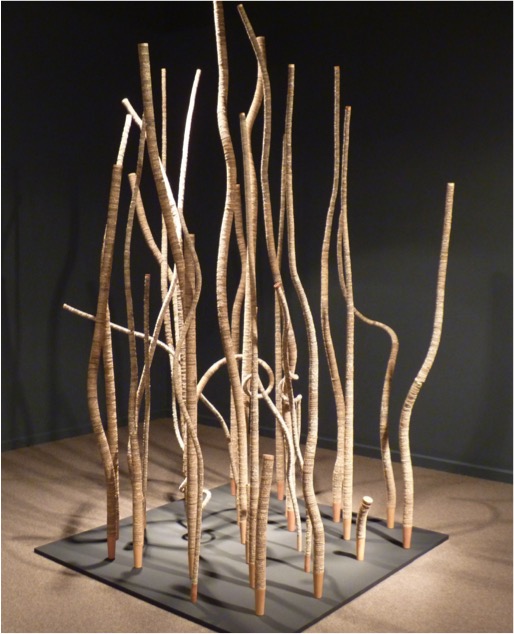
‘THe Sticks’
Discuss the relationship between your medium cardboard and your organic shapes?
I have always been conscious of the origin of cardboard. It comes from trees and trees are organic living things. The cardboard still contains the DNA from the trees it came from. I have never seen cardboard as originating from a box – it has always meant more to me than a utilitarian packaging material. Initially, I wanted people to see the link between my work and the medium’s origin and also to be able to look beyond the flat surfaces and right angles of a cardboard box. I wanted people to look below the surface and beyond the obvious – towards the hidden beauty within.
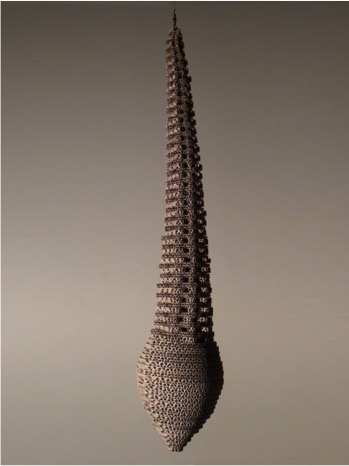
‘Waiting’
Do you always work in series, e.g. Paddock?
I think series’ of work reflect the excitement I feel when working in this medium. I just can’t stop at one, and each new work develops a little further, or I discover a new nuance that I want to explore. Sometimes I create a series of works simply to fill a space – to create a bigger impact or prevent a small work being swallowed up by a large space.
What are you currently working on?
I am currently working on an installation for the CODA Museum at Apeldoorn, Netherlands. The exhibition, titled CODA Paper Art puts paper and cardboard centre stage as a material. It opens on 7th June, 2015.
Contact details.
art@tracyluff.com
Tracy Luff, Goulburn NSW, Australia
Interview by Deborah Blakeley, January, 2015
Think a colleague or friend could benefit from this interview?
Knowledge is one of the biggest assets in any business. So why not forward this on to your friends and colleagues so they too can start taking advantage of the insightful information the artist has given?
Other artists you may be interested in:


